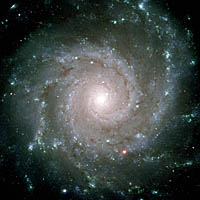Top tips for seeing the best of Scotland's dark skies
Scotland has some of the largest areas of dark sky in western Europe. These dark skies are found throughout the rural areas of the Highlands and Islands and the South of Scotland that are free of light pollution. Here, you can see superb starry skies and even the Milky Way!
Even within towns and cities you can find local places that are away from the worst of the local light pollution. You can see many wonders of the night sky including planets, constellations and shooting stars.
A growing number of areas in Scotland - and the rest of the UK - are being officially recognised as Dark Sky Places.
Several venues run regular stargazing events.
If you are visiting Scotland, look for businesses that follow our Stargazers
Welcome scheme.
Wherever you are in Scotland, here are our top tips for enjoying our dark skies.
Where?
Find somewhere:
• away from the glare of direct lights.
• open to the public (remember to follow the Scottish
Outdoor Access Code)
• with good sightlines, without tall buildings or trees.
• Safe, without hazards such as traffic or steep drops
Local parks, playing fields or forest car parks can all be good places to visit.
When?
• An hour and a half after sunset for the sky to become properly dark
– so check your local sunset times.
• When the Moon is not in the sky. The Moon is a beautiful sight, changing
its shape and position in the sky during the course of a month. But
moonlight can make it hard to see the stars – so check your local moon calendar.
When using the site at the above links, click on the map for your location to display the sun and moon data for the current day. Skip forwards using the calander to find the next new moon for example .
How?
All you need to get started:
• Your naked eyes. It’s a really good idea to get familiar with the night sky
with just your naked eyes. If are ready for investing in binoculars or telescopes,
get in touch with a specialist shop or local astronomical society for advice.
• A red torch. Your eyes can take up to ten minutes to adjust fully to the
dark – enabling you to see more stars. During this time avoid looking at
any bright lights. However, red lights don’t affect your night vision so
use a red torch such as a bike light.
• Wrap up very warm. It’s often cold when the sky is clear.
• Starcharts. Our Night
Sky resources show you the where to start.
Enjoy and clear skies!
